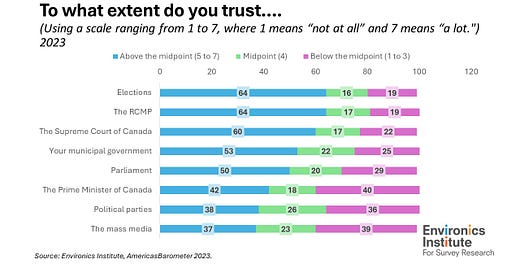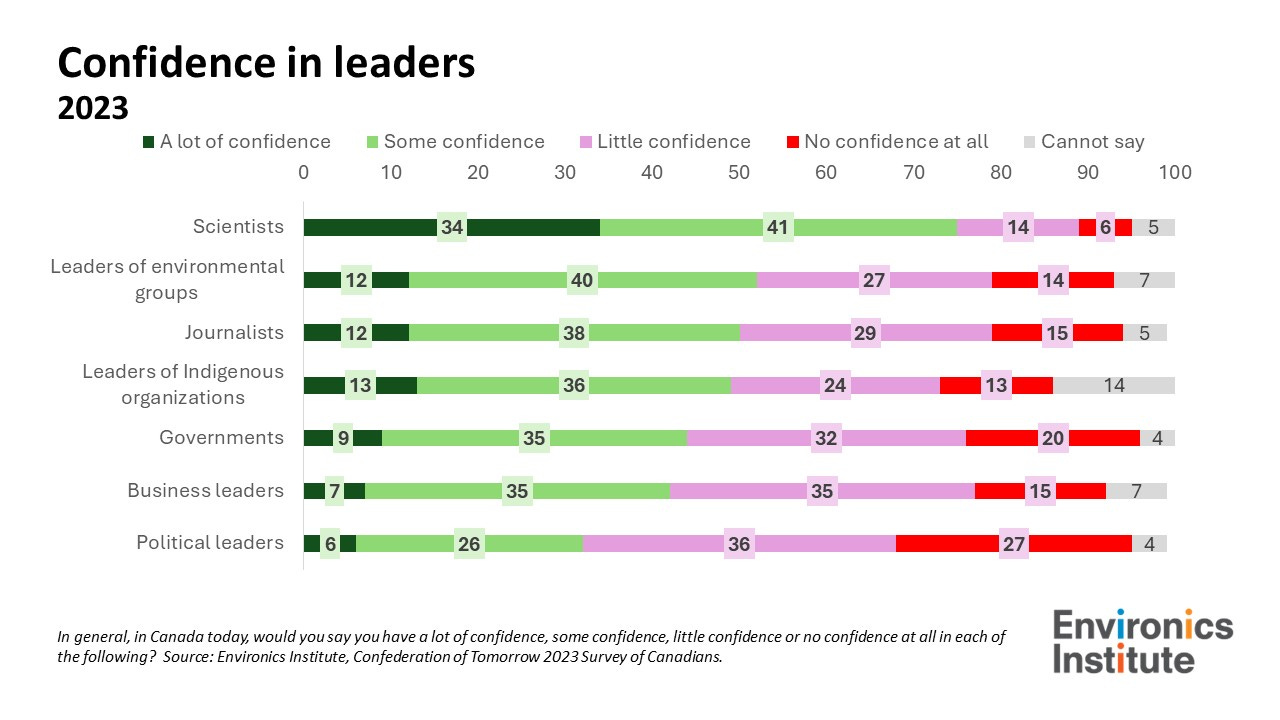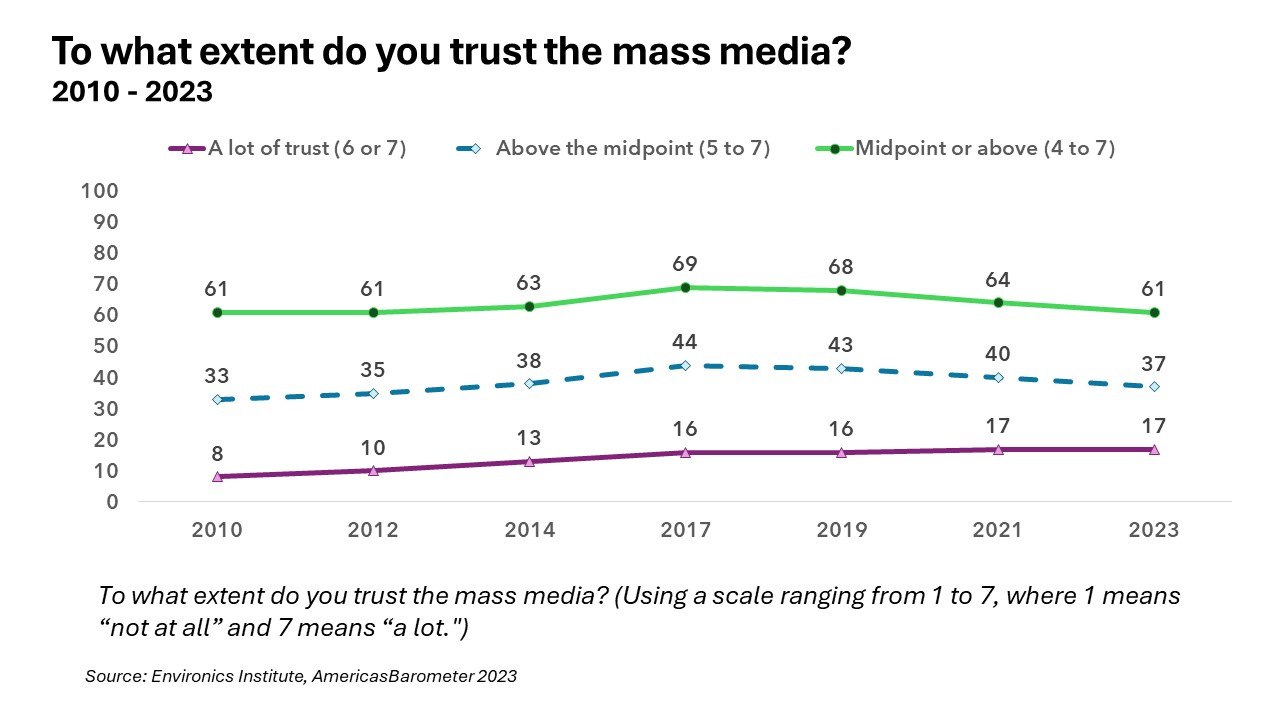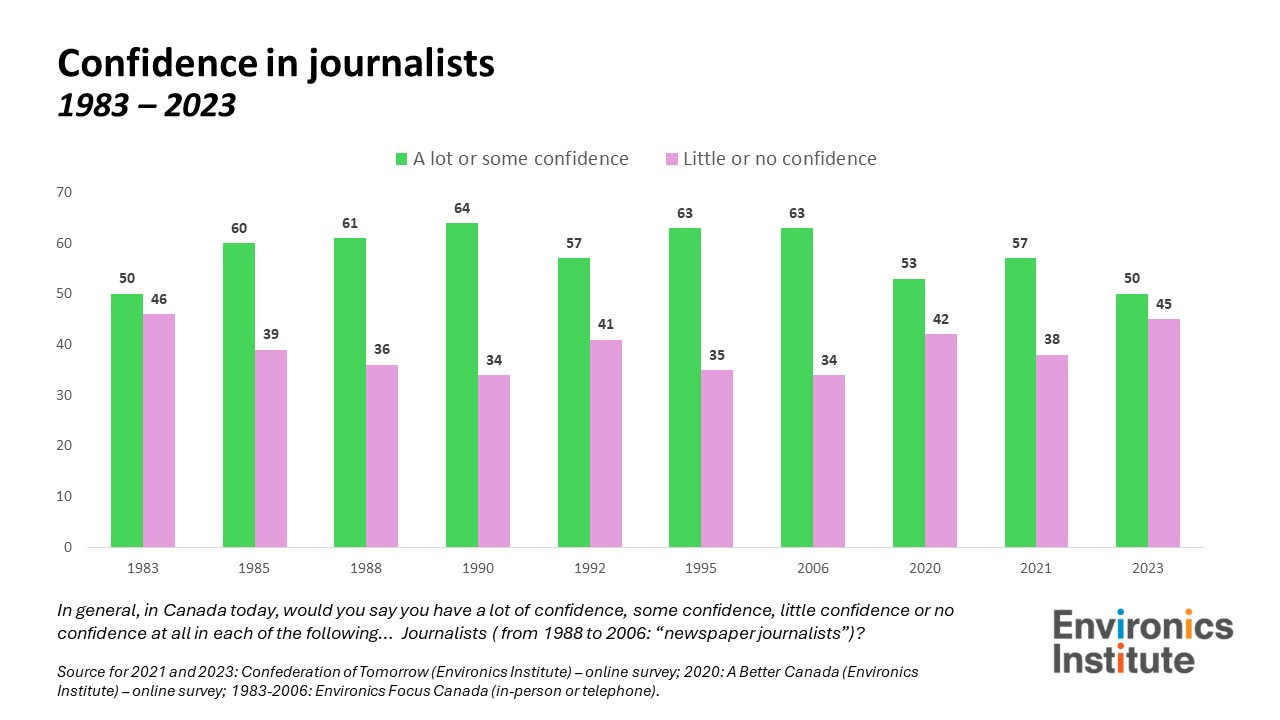The first post in this series on trust in the media ended with two questions: how does trust in the media compare to trust in other institutions, and how have levels of trust changed over time?
The first question is fairly easy to answer. Canadians tend to place more trust in institutions they perceive as being above the political fray than they do in the media. But they are no less likely to trust the media than to trust governments, parties and politicians.
This is the pattern reported in the Statistics Canada study that prompted this series. According to the most recent Statistics Canada survey on the topic, Canadians were most likely to express high trust in the police, followed by the justice system and courts, the school system, the Canadian media and then Parliament.
Our own surveys produce broadly similar results. The AmericasBarometer study also finds that the police and the courts are more likely to be trusted than more overtly political institutions and actors. The mass media finds itself at the bottom of this particular list, but it is trusted by the public roughly to the same extent as the prime minister (note the question wording refers to the office and not to the name of the current occupant) and political parties.
A differently worded question produces somewhat more encouraging results for the media – perhaps because the question wording refers to “journalists” and not the more amorphous “mass media,” and also because it avoids using numeric scales, which (as we discussed last time) are more difficult to interpret. According to this survey, Canadians express the greatest confidence in scientists, followed by environmental leaders, journalists and Indigenous leaders. Governments, business leaders and political leaders are less likely to elicit public confidence.
In short, the media certainly does not enjoy the levels of trust or confidence that scientists or judges do. But if I were a politician, I wouldn’t want to single out the media as having lost the public’s trust, since – depending on the survey question – politicians are either in no better a position, or in a worse position, than the media.
The trends over time may be more surprising – at least if you assume that levels of trust must be falling. The survey tracking trust in the mass media shows no decline since 2010 (the chart combines the numbers on the scale in the three overlapping groupings). Trust went up a little between 2010 and 2017 and then edged down again more recently – following a pattern that applies to questions about trust and satisfaction in Canada more broadly. But, depending on which grouping you use, the situation in 2023 is either no worse or a little better than it was in 2010.
The question about confidence in journalists has not been asked as regularly (there are gaps in the time series), but it covers a longer period of time. There are two ways to read this chart. One is that the proportion of Canadians who have confidence in journalists is lower today than at almost any other time over the past four decades. The other is that confidence in journalists today is no lower than it was when the question was first asked 40 years ago, in 1983.
How does this trend compare to trust in other institutions or actors? Confidence in journalists is more stable than confidence in governments – which in Canada hit a low in 1992 and recovered somewhat thereafter.
A more interesting comparison is with confidence in business leaders. In the 1980s, Canadians were more likely to have confidence in business leaders than they were in journalists. In the 1990s and early 2000s, they attracted similar levels of public confidence. Confidence in both has declined since then, but more so for business leaders (public confidence in business leaders never recovered after the financial crisis).
Confidence in journalists is 10 percentage points lower today than it was in 1985; but confidence in business leaders is 29 points lower. But, for some reason, how Canadians feel about business is usually left out of the discussion of whether levels of public trust are in decline.
Details of the surveys covered in this report, including question wording, sample sizes, methodologies and full results, are available on our website. Look for information about the AmericasBarometer and Confederation of Tomorrow surveys.
What is the Environics Institute for Survey Research? Find out by clicking here.
Follow us on other platforms:
· Twitter: @Environics_Inst or @parkinac
· Instagram and Threads: environics.institute










Business associations should worry about these findings given how it may discount or impede their lobbying and advocacy.